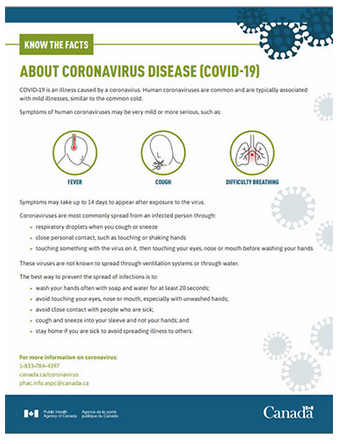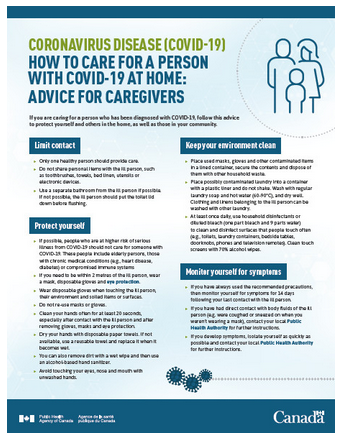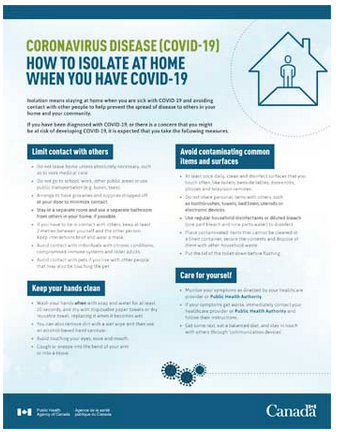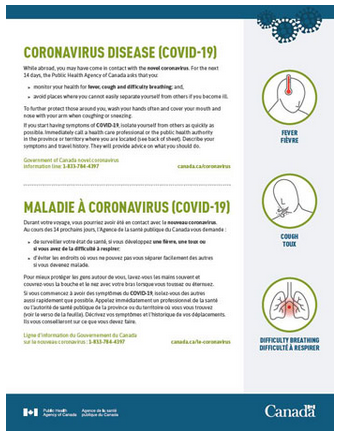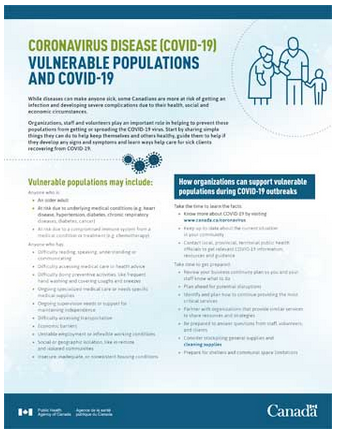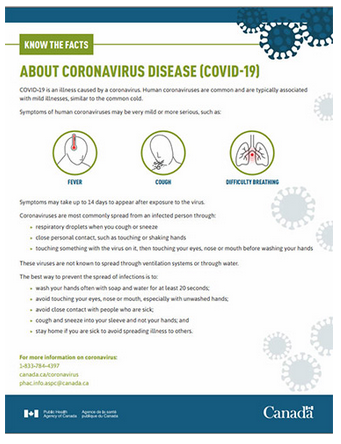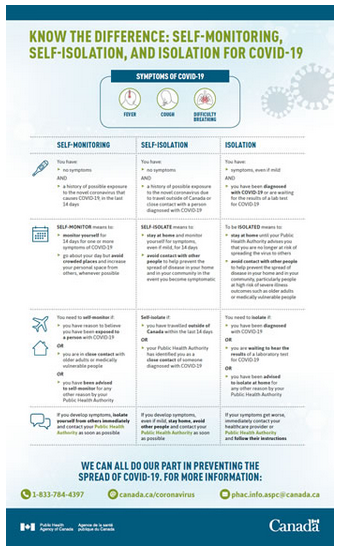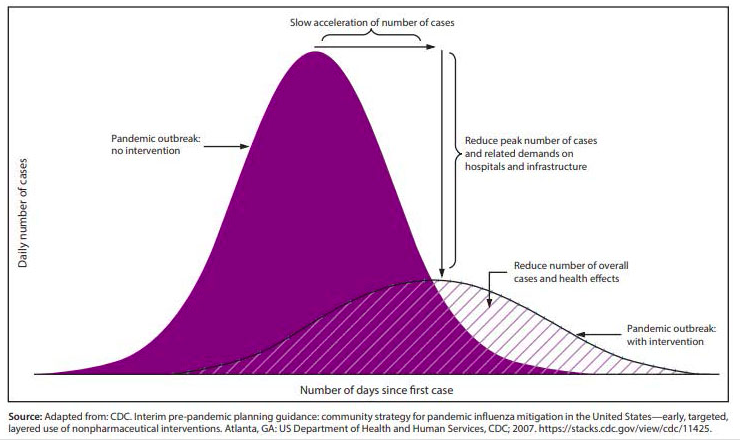- What is it?
- How to care for a person with COVID-19 at home – Advice for caregivers
- How to isolate at home
- Travel advice
- Vulnerable populations
- Know the facts
- Self-monitoring, self-isolation
- Social distancing
- Managing stress
What is it?
A pneumonia outbreak, now known to be caused by a novel (new) coronavirus (COVID-19), was identified in Wuhan, China on December 31, 2019.
Symptoms may take up to 14 days to appear after exposure to COVID-19. This is the longest known infectious period for this disease.
Symptoms have included:
- fever
- cough
- difficulty breathing
- pneumonia in both lungs

Coronavirus disease (COVID-19): How to care for a person with COVID-19 at home – Advice for caregivers
If you are caring for a person who has been diagnosed with COVID-19, follow this advice to protect yourself and others in the home, as well as those in your community. Read more
Coronavirus disease (COVID-19): How to isolate at home when you have COVID-19
Isolation means staying at home when you are sick with COVID-19 and avoiding contact with other people to help prevent the spread of disease to others in your home and your community. Read more
Coronavirus disease (COVID-19): Travel advice
To limit the spread of COVID-19, the Government of Canada advises that you avoid all non-essential travel outside of Canada until further notice.
Many countries have put in place travel or border restrictions and other measures such as movement restrictions and quarantines. Read more
Coronavirus disease (COVID-19): Vulnerable populations and COVID-19
While diseases can make anyone sick, some Canadians are more at risk of getting an infection and developing severe complications due to their health, social and economic circumstances. Read more
Know the facts about coronavirus disease (COVID-19)
COVID-19 is an illness caused by a coronavirus. Human coronaviruses are common and are typically associated with mild illnesses, similar to the common cold. Read more
Know the Difference : Self-monitoring, self-isolation, and isolation for COVID-19
Self monitoring is when you monitor your health for symptoms of COVID-19 like fever, cough and difficulty breathing. Self-isolation is when you have been instructed to separate yourself from others, with the purpose of preventing the spread of the virus, including those within your home. Read more
Community-based measures to mitigate the spread of coronavirus disease (COVID-19) in Canada
Guidance federal/provincial/territorial public health authorities on the use of public health measures to reduce and delay transmission of COVID-19 in the community. This includes Social distancing Read More
Manage Anxiety & Stress
The outbreak of coronavirus disease 2019 (COVID-19) may be stressful for people. Fear and anxiety about a disease can be overwhelming and cause strong emotions in adults and children. Coping with stress will make you, the people you care about, and your community stronger. Read More (CDC.gov) or Read More (GNB.ca)

